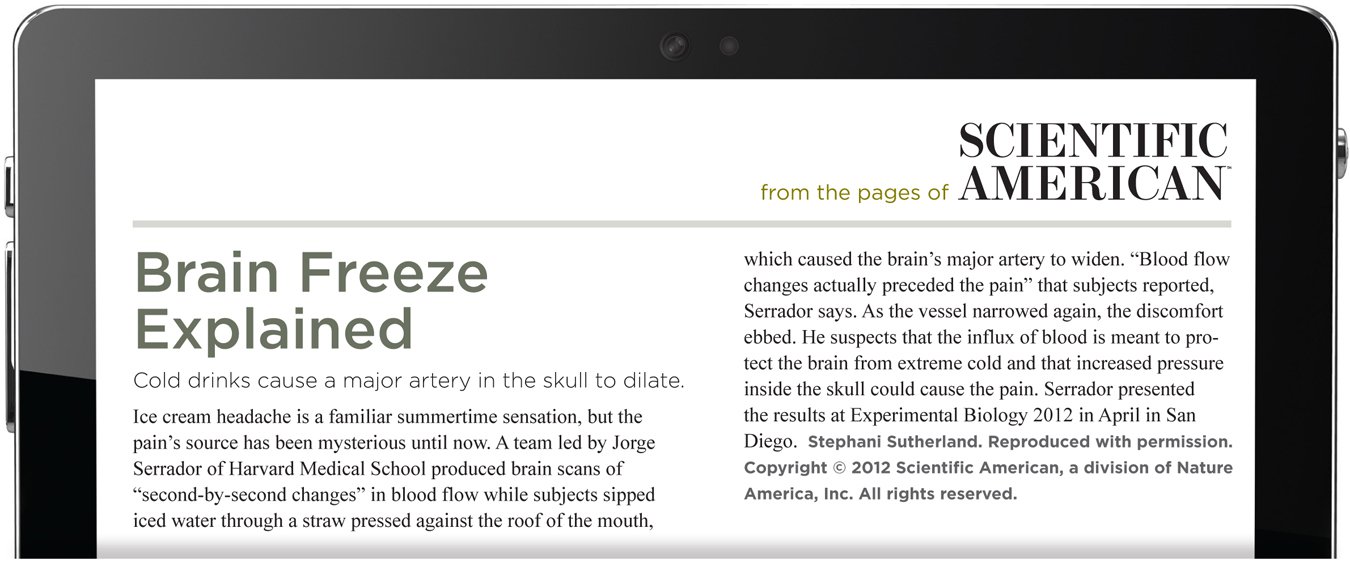Chapter 1. Chapter
Article
From the Pages of Scientific American
Brain Freeze Explained

Click the image to enlarge. Click "Next" to continue.
1.1 Quiz
1. Serrador and colleagues were able to determine the origins of “brain freeze” by using brain-imaging techniques that:
| A. |
| B. |
| C. |
| D. |
Correct.
Incorrect.
2. The iced water on the roof of the mouth triggers what reaction in the brain?
| A. |
| B. |
| C. |
| D. |
Correct.
Incorrect.
3. Serrador believes that the pain of brain freeze comes most directly from:
| A. |
| B. |
| C. |
| D. |
Correct.
Incorrect.
4. Brain freeze, as well as other kinds of pain, can be blocked by _____, a substance that blocks transmission of pain signals in the brain and spinal cord.
| A. |
| B. |
| C. |
| D. |
Correct.
Incorrect.
5. The idea that biopsychosocial factors actually increase or decrease the perception of pain by opening and/or closing neurological pathways is called:
| A. |
| B. |
| C. |
| D. |
Correct.
Incorrect.